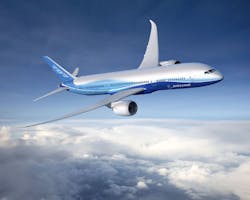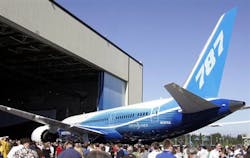Boeing to begin modifying existing 787 fleets with FAA-approved battery design
EVERETT, Wash., 22 April 2013. Boeing officials have deployed teams to locations around the world to begin installing improved battery systems on Boeing 787 Dreamliners following Federal Aviation Administration (FAA) approval of the company’s battery system improvements.
Kits with the parts needed for the new battery systems are staged for shipment and new batteries also will be shipped immediately and teams have been assigned to customer locations to install the new systems, according to a company spokesperson. Airplanes will be modified in approximately the order they were delivered.
Boeing will also begin installing the modified system on new airplanes at the company's two 787 final-assembly plants, with deliveries expected to resume in the weeks ahead. Despite the disruption in deliveries that began in January, Boeing expects to complete all planned 2013 deliveries by the end of the year.
"FAA approval clears the way for us and the airlines to begin the process of returning the 787 to flight with continued confidence in the safety and reliability of this game-changing new airplane," says Boeing Chairman, President, and CEO Jim McNerney. "The promise of the 787 and the benefits it provides to airlines and their passengers remain fully intact as we take this important step forward with our customers and program partners."
The FAA's action will permit the return to service of 787s in the United States upon installation of the improvements. For 787s based and modified outside the U.S., local regulatory authorities provide the final approval on return to service.
The improved battery system includes design changes to both prevent and isolate a fault should it occur. In addition, improved production, operating and testing processes have been implemented. The new steel enclosure system is designed to keep any level of battery overheating from affecting the airplane or even being noticed by passengers.
"This is a comprehensive and permanent solution with multiple layers of protection," explains Boeing Commercial Airplanes President and CEO Ray Conner. "The ultimate layer of protection is the new enclosure, which will ensure that even if a battery fails, there is no impact to the airplane and no possibility of fire. We have the right solution in hand, and we are ready to go.
"The Boeing team is ready to help get our customers' 787s back in the air where they belong," Conner adds.

